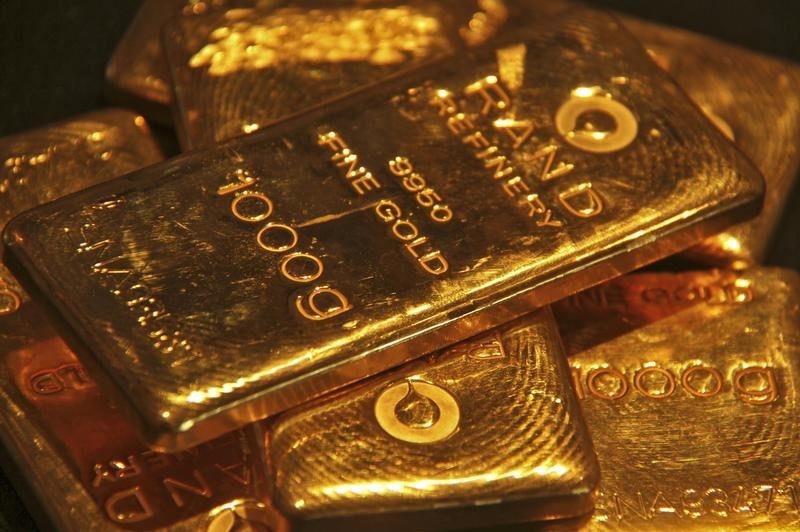Investing.com - Gold prices spiked higher on Monday, amid mounting geopolitical tensions in the Middle East after Saudi Arabia cut diplomatic ties with Iran over the weekend.
The move followed a weekend storming of the Saudi embassy in Tehran in response to the kingdom's execution of a prominent Shiite cleric.
Gold for February delivery on the Comex division of the New York Mercantile Exchange tacked on $11.50, or 1.08%, to trade at $1,071.70 a troy ounce during European morning hours. It earlier rose by as much as 1.2%.
Also on the Comex, silver futures for March delivery inched up 16.2 cents, or 1.17%, to trade at $13.96 a troy ounce.
Meanwhile, investors were looking ahead to the ISM report on U.S. manufacturing activity later in the day for further clues on the strength of the economy and the timing of future rate hikes.
The dollar index, which measures the greenback’s strength against a trade-weighted basket of six major currencies, was down 0.5% at 98.28, as risk-off trade boosted demand for the safe-haven yen.
Gold lost approximately 11% in 2015, the third yearly loss in a row, as speculation over the timing of a Fed rate hike dominated market sentiment for most of the year. Rising interest rates historically have been bad news for gold, which can't compete with the higher interest rates offered by other assets.
With the first U.S. rate hike since 2006 out of the way, investors are now focusing on the pace of future rate increases. The Fed, from its forecasts, is anticipating four rate hikes next year.
Elsewhere in metals trading, copper tumbled on Monday, as the release of weak Chinese manufacturing activity data weighed as investors returned to the markets after the long New Year weekend.
Copper traders view Chinese factory activity as an indicator of the nation's copper demand, as the red metal is widely used by the sector.
The Caixin manufacturing purchasing managers’ index for December released earlier slipped to 48.2 from 48.6 in November, contracting for a tenth month and coming in below expectations for 49.0.
Meanwhile, the official manufacturing purchasing managers' index published on Friday inched up to 49.7 last month from November's three-year low of 49.6. A reading below 50.0 indicates industry contraction.
The downbeat data underlined worries the world's second largest economy may still be losing momentum despite a raft of stimulus measures in recent months.
The Asian nation is the world’s largest copper consumer, accounting for nearly 45% of world consumption.
